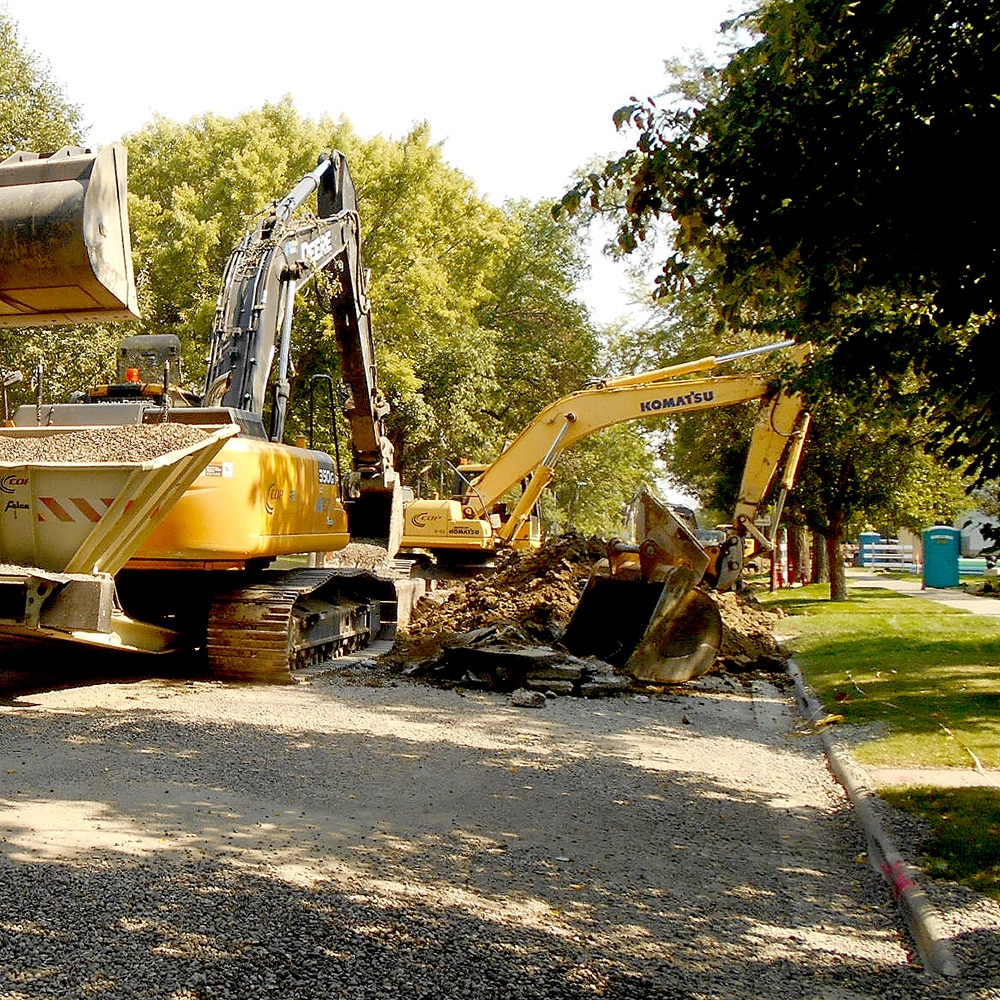

How to Construct a Water Main Replacement
Best Practices for Water Main Replacements
Water main replacement is a critical part of any water system, as it ensures the safety and longevity of the drinking water supply. As public work directors, engineers, and operators of water systems, it is essential to understand the process of constructing successful water main replacement projects. This article will provide information on best practices to ensure your project is built effectively.

Note to Readers
With careful planning and the correct information, designing a water main replacement project that is efficient, cost-effective, and has minimal disruption to your water system, its users, and the traveling public is possible. From understanding the project’s scope to choosing the right materials and methods, here are some tips and insights to help make the design phase of your project successful.
Read the second article in this seriesPreconstruction Considerations
Before a water main replacement project begins, hold a preconstruction meeting with the owner, contractor, engineer, and utility companies to review important project items such as the scope of work, schedule, budget, safety requirements, and any special conditions for the project. During the meeting, the owners’ team should ensure that all stakeholders are aligned with project expectations and aware of any potential issues or constraints that could arise during construction.
Additionally, it can be valuable to develop a communication plan with the contractor and stakeholders before, during, and after construction to maintain an effective relationship and ensure transparency throughout the project.
Finally, take photos of existing conditions to provide a baseline for comparison after construction. This will help ensure that the site is restored correctly and that damage to private property is appropriately documented. Drone imagery is a great way to accomplish this task, as capturing photos that show adequate density and detail can be challenging.


Construction Administration
Project teams should generally hold weekly meetings with the owner, contractor, and engineer to keep everyone apprised and current on known issues. Decide when and how often to invite subcontractors, utility owners, other ROW owners, and other stakeholders throughout the project. Engineers should keep detailed documentation of meeting notes, phone logs, and emails and get all decisions in writing.
A knowledgeable Resident Project Representative (RPR) can also help you track progress, reconcile payment quantities, and check for general conformance with plans and specifications to help assure quality work. The RPR will develop daily reports and pictures to document the as-built condition of all constructed facilities, such as valves, tees, bends, and services.
The contractor is also required to provide record drawings, and the RPR should review the contractor’s record drawings at monthly pay applications to verify that the records are up to date and consistent with the RPR reports. Keeping record drawings, test reports, and other project documentation current and organized throughout construction will ease the project closeout process. It will also benefit others who may need to retrieve project documents in the future.
Finally, it is important to proactively address complaints from the public by performing project drive-throughs by the RPR or engineer to ensure traffic control is in place, the project site is kept clean, and construction material is not spilling over onto private property.
Public Relations
Good communication with the public before and during construction is paramount to meeting their needs and minimizing inconveniences. Business owners, residents, and the driving public must be informed of construction updates, schedules, water shutdowns, and impacts on trash collection, mail delivery, and traffic. This helps them plan, mitigate potential inconveniences or delays, and provide feedback throughout the project.
The project does not stop with the water main replacement; surface restoration is also important. The public will not notice the new water main itself. Instead, they will focus on how smooth the new asphalt trench patch is, their landscaping, whether it was restored to their satisfaction, or their cracked driveway and if it was fixed properly and promptly. By restoring impacted areas to their previous conditions—or better—construction crews can help maintain (or hopefully improve) public relations and overall satisfaction with the project.
Keeping Them in the Loop
 Going the extra mile regarding communication can benefit your project in many ways.
Going the extra mile regarding communication can benefit your project in many ways.
Business owners, residents, and public drivers need current—and sometimes daily—information regarding construction updates, schedules, water shutdowns, and impacts on trash collection, mail delivery, and traffic. This helps them plan, mitigate potential inconveniences or delays, and provide feedback throughout the project.
One way we’ve accomplished this is to print door hangers with QR codes that link to the project’s website to keep the public informed.
Key Takeaways
Water main replacement projects can be complex and costly, requiring careful planning and consideration. To review important project details, a preconstruction meeting should be held with the owner, contractor, engineer, and utility companies. Successful teams should also create an effective communication plan with contractors and local stakeholders and document existing project conditions.
Construction administration should track the project’s progress, keep up-to-date records, and check for conformance with the plans and specifications. Finally, focusing on public relations before and during construction will benefit the project and the community.
By following these steps and understanding the various complexities, public works directors, engineers, and operators can create successful projects that meet their goals.
Planning Your Next Project? Contact us for tips and suggestions
